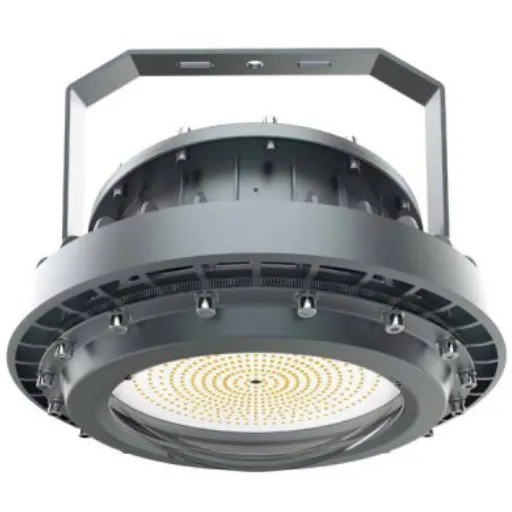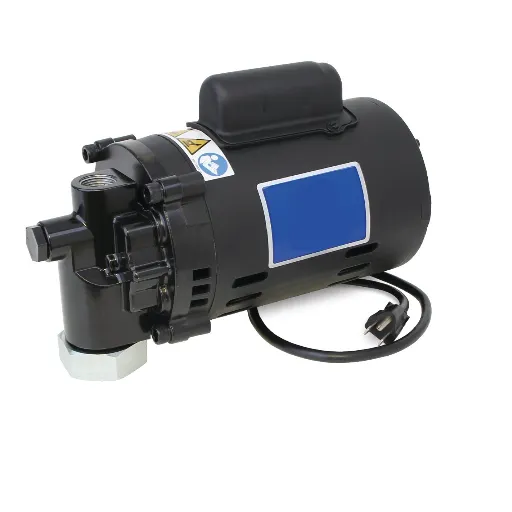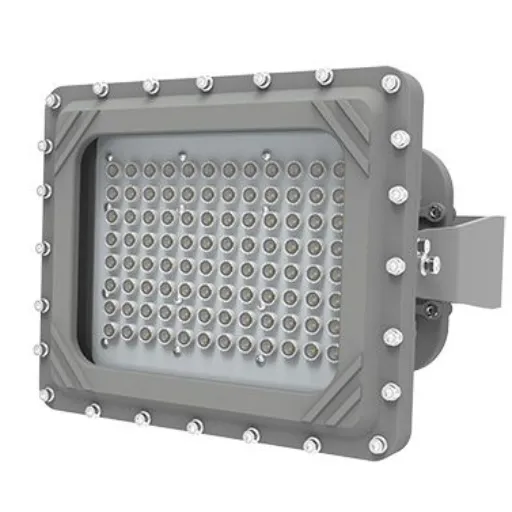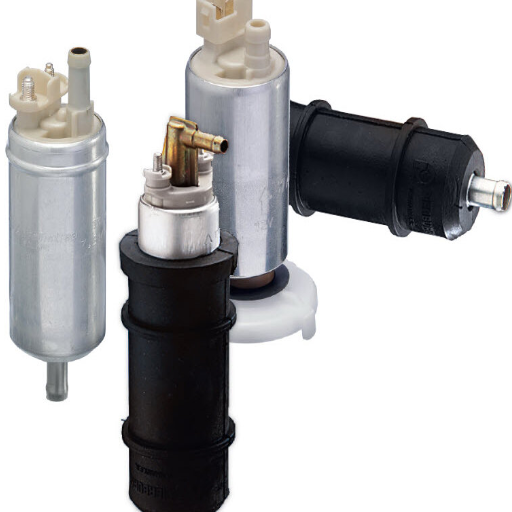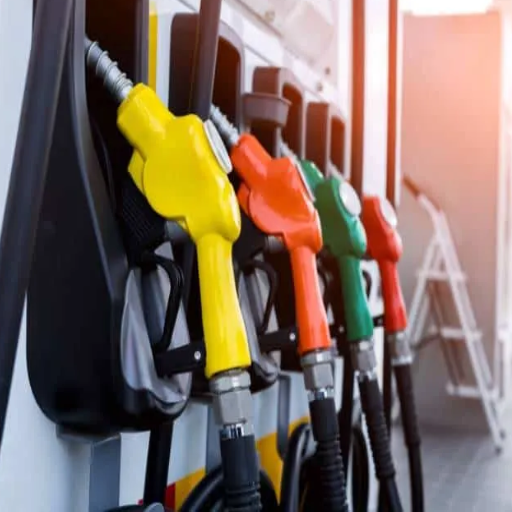The invention of automated fuel dispensers has led to a significant change in how we refuel our vehicles. This state-of-the-art system utilizes the highest level of today-mentioned technology to ensure a convenient and comfortable environment for the entire user process. Long queues and lengthy manual processes are now passe. In other words, the automated dispensers have simplified the process, hence saving time and physical exertion. But how do such dispensers operate, and what benefits do they offer consumers and businesses? The following article will examine the creation of the automated fuel dispenser, its key attributes, and its role in the contemporary fueling sector, revealing why it is poised to become the benchmark standard for fuel dispensation.
Understanding Fuel Dispensers
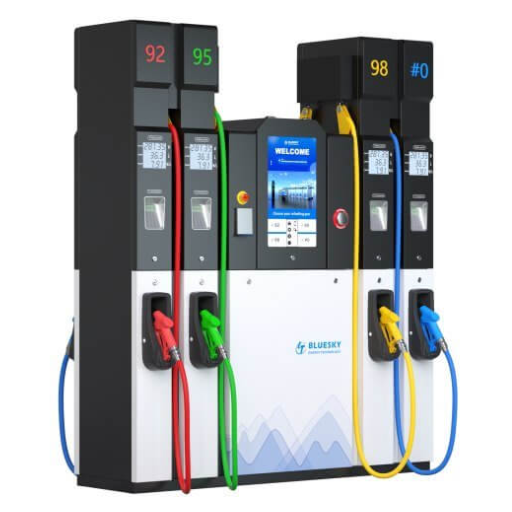
Designed for dispensing fuel and other materials into a vehicle’s chamber, fuel dispensers operate by suction from underground storage tanks and utilize a series of pumps and nozzles. A modern dispenser utilizes meters for precise measurement, featuring a digital interface for user convenience. Many even feature an integrated card payment system for efficiency and security; they are reliable, efficient, and essential for a smooth and easy refueling experience.
What is a Fuel Dispenser?
The art of dispensing fuel through grotesquely sophisticated machinery enables an economic and safe conveyance of fuel to vehicles. Generally, these units combine several critical components, among them pumping units, metering systems, and safety devices. With advanced digital interfaces installed, modern fuel dispensers provide a user interface for selecting the fuel type-gasoline or diesel, or perhaps some alternative like ethanol-blend. They also give real-time displays of price and quantity. In light of recent developments, nuisance may be mitigated with consideration for the environment: several dispensers now feature a vapor recovery system to minimize emissions.
Quality dispensers maintain accuracy within ±0.3% error levels • IoT integration for remote monitoring • Growing EV charging integration
Truly high-level dispensers go IoT-wise, alive to be remotely monitored for maintenance needs and fuel management. Data demonstrate that at the metering point, accuracy in quality dispensers keeps error levels within ±0.3%, ensuring the consumer receives exactly what they paid for. Elsewhere, embedded electric charging stations, as well as biofuel technologies within hybrid dispensers, have emerged as growth avenues for a broader energy mix in the global fuel dispenser market. Fuel dispensers remain the nerve of a traditional gas station, albeit evolving to serve tomorrow’s power needs.
Types of Fuel Dispensers
Fuel Dispensers differ by type to meet the global energy market requirements. The major categories include mechanical, electronic, and hybrid fuel dispensers.
Mechanical Fuel Dispensers
These are the traditional dispensers that rely on mechanical systems for operation. These are still predominantly used in parts of the world with little access to advanced technology. These mechanical dispensers offer greater reliability and durability in adverse conditions, albeit without the precise metering capabilities provided by electronic dispensers.
Electronic Fuel Dispensers
Electronic fuel dispensers equipped with the latest technology are designed to offer dispensing accuracy, user-friendly interfaces, and advanced security features. These are capable of integrating payment systems and providing station operators with real-time data for inventory management. Electronic dispensers have been in high demand in urban markets due to their convenience and precision, with adoption rates exceeding 70 percent in North America and Europe.
Hybrid Fuel Dispensers
Hybrid dispensers are designed to deliver both conventional fuels, such as gasoline and diesel, and renewable energy sources, including biofuels. With the rising interest in sustainable energy solutions, an increasing number of dispensers are being installed in charging points for electric vehicles (EVs). Urged by worldwide commitments to reduce carbon emissions, the installation of EV-compatible dispensers is projected to grow at a rate of more than 12% CAGR by 2030, according to relevant studies.
In these changes, there is a hint of the shifts fuel dispensers have gone through due to the modern-day challenges concerning energy and how these have ensured their versatility and readiness for the future.
How Fuel Dispensers Work
Fuel dispensers work in an elaborate system to transfer fuel accurately and efficiently into vehicles. Interfacing hydraulic, electrical, and mechanical components allows these machines to dispense fuel accurately. The process starts with the pump, which draws fuel from the underground storage tanks. The fuel then passes through a filtration system to remove impurities before being dispensed.
Being more modern, fuel dispensers are equipped to use advanced flowmeters, which could be positive displacement or turbine, that measure the exact amount of fuel being transferred. These flowmeters read fuel with an accuracy of around 0.1%, and this information is displayed on the screen for customer knowledge. An electronic sensor within the dispenser monitors flow rates, temperature, and pressure to calibrate fuel delivery.
To provide a superior customer experience, most fuel dispensers are equipped with a user interface that includes a digital screen, card payments, and sometimes contactless payments. These sophisticated fuel dispensing units can connect to a centralized system for data tracking, inventory management, and scheduling maintenance. In recent times, some more advanced systems may even be outfitted with IoT capabilities for real-time monitoring and swift diagnostics.
Data points to a significant rise in the market value of smart-enabled fuel pumps in the years to come. For instance, the value of IoT-enabled fuel systems is expected to continue growing steadily, driven by increasing consumer demand for a more streamlined and digitally enhanced fueling experience. Thus, these fuel dispensers exemplify how technology and sustainability requirements continue to evolve in the modern energy landscape.
The Rise of Automated Fuel Dispensers
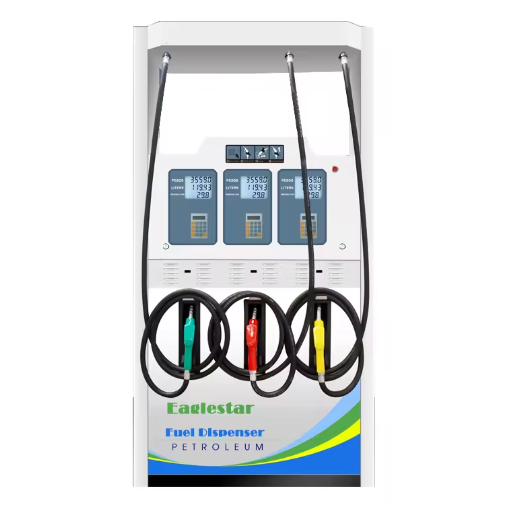
Automated fuel dispensers are creating a new kind of service experience, one that is fast, convenient, and secure. With such systems, little limit is set on human interaction, where consumers relatively or entirely refuel their vehicle, choosing from easy interfaces and digital payment modes. Delivering benefits such as shorter waiting times, superior transaction security, and more efficient fuel station operations is provided. The increasing application of IoT, combined with advanced analytics, enables instantaneous monitoring and maintenance at the back end to ensure reliability and smooth operations. Such a development underscores the growing need for speed among consumers and the industry’s willingness to explore innovations that cater to customer service.
Benefits of Automation in Fuel Dispensation
Automation in the fuel dispensation processes offers several advantages to the business and the consumer. First, in essence, it boosts efficiency; less human interference means fewer errors and faster service. The automated system maintains inventory control of fuel types and supplies them according to demand, thereby minimizing wastage. Secondly, there is an improvement in the customer experience through the integration of high-tech systems, such as self-service kiosks and mobile payments, allowing for faster and more convenient transactions. Thirdly, automation plays a crucial role in operations, thereby preventing fuel theft and ensuring compliance with safety regulations through real-time monitoring systems. Moreover, the introduction of IoT, along with predictive analytics for maintenance, enables equipment to be maintained proactively, reducing downtime and making operations at fuel stations more reliable. These advancements highlight the significant role automation plays in modernizing fuel dispensation processes to meet growing market demands.
Key Features of Automated Fuel Dispensers
| Feature | Description | Benefits |
|---|---|---|
| Real-Time Monitoring and Data Collection | Advanced monitoring systems track fuel levels, transactions, and equipment performance | Effective inventory control, prevents fuel shortages or overstocking |
| Enhanced Payment Options | Multiple payment channels including contactless, mobile wallets, and cards | Convenient transactions, enhanced security |
| IoT Integration and Predictive Maintenance | Seamless communication with central management platforms | Reduced downtime through predictive analytics |
| User Interface | Intuitive touchscreens with multilingual support | Accessible to diverse customer groups |
| Safety and Security | Tamper detection and transaction recording | Prevention of fuel theft, compliance with safety standards |
| Energy Conservation | Designed for minimal energy consumption and environmental impact | Contributes to sustainability in fuel industry |
Comparison with Manual Fuel Dispensers
Automated Fuel Dispensers
- Faster and more precise transactions
- Integrated payment systems
- Reduced customer wait times
- Lower human error rates
- Advanced safety features
- Automatic shut-off and tamper detection
- Lower maintenance costs
- Higher operational efficiency
Manual Fuel Dispensers
- Lower initial costs
- Simpler technologies
- Ideal for small operations
- Suitable where advanced infrastructure is limited
- Potential for imprecision
- Higher risk of theft
- Lower operational efficiency
- More prone to human error
Automated fuel dispensers have many advantages over manual ones. They provide a faster and more precise transaction through integrated payment systems, resulting in fewer customer wait times and reduced human error. The incorporated safety features include an automatic shut-off method with tamper detection, providing a safeguard against accidents and fuel theft, making it safer compared to manual models. There are, however, lower maintenance costs associated with automated ones, and they are more efficient in general. With fewer initial costs and simpler technologies, manual fuel dispensers are thus ideal for small operations or locations where advanced infrastructure is not readily available. While manual dispensers can be subjected to imprecision, theft, or inefficiencies, this factor alone makes the automated dispenser superior in the modern world of fuel dispensing.
Components of an Automated Fuel Dispenser
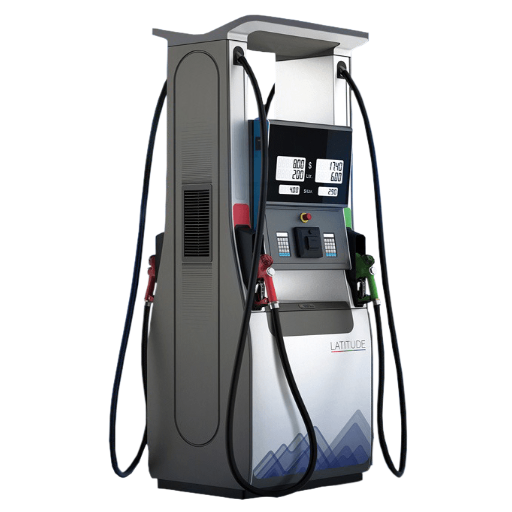
Key components within an automated fuel dispenser are generally:
| Component | Function | Key Features |
|---|---|---|
| Fuel Pump | Transfers fuel from storage tank to vehicle | Electric/mechanical motor, safety shut-off |
| Electronic Metering System | Ensures accuracy of fuel dispensed amount | Precision measurement, digital readouts |
| User Interface | Display screen and input devices for customer interaction | Touchscreen, card reader, payment processing |
| Control Unit | Manages dispenser operations and system interfaces | Payment server connectivity, operational management |
| Hose and Nozzle | Safe and efficient fuel delivery to vehicle tank | Multiple nozzle types, safety mechanisms |
| Sensors | Monitor flow rate, levels, pressure, and abnormal conditions | Safety assurance, accurate measurements |
| Networking Module | System connectivity for real-time data sharing | Transaction processing, remote monitoring |
With all these components working together, the fuel dispensing operation is made efficient, accurate, and user-friendly.
Controllers and Monitoring Systems
The heart and soul of a modern fuel dispensing operation are controllers and monitoring systems, which ensure smooth functioning and safety. Controllers coordinate the operations of different fuel pump components by performing tasks such as measuring the quantity of fuel dispensed, processing payments, and maintaining the system for diagnostic purposes. Advanced controllers based on microprocessors and embedded software also improve accuracy and performance.
Monitoring systems, on the contrary, are instrumental in providing real-time supervision over any fuel-dispensing activity. These systems, equipped with pressure and flow sensors, are configured to detect and report leaks, abnormalities, or irregularities in dispensing flow rates, notifying operators immediately about potential safety or maintenance concerns. The data from these monitoring systems often gets integrated with cloud-based platforms that allow for remote monitoring, predictive analysis, and decision support.
30% reduction in maintenance costs • 15% reduction in fuel loss • Enhanced operational efficiency
According to recent statistics, adopting smart controllers and an IoT monitoring system can result in a 30% reduction in maintenance costs and a 15% reduction in fuel loss, highlighting the significance of these systems for operational efficiency. These systems facilitate the delivery of the correct quantity of fuel, as well as the collection of data for inventory analysis, identifying areas for improvement in customer satisfaction, and ensuring compliance with industry standards.
Types of Nozzles Used
The fuel dispensing nozzles come in several designs, depending on their applications, to maintain efficiency and safety throughout the fuel dispensing process. Among these are:
Automatic Shut-Off Nozzles
Commonly used at commercial and retail fuel stations. Equipped with a mechanism that shuts off fuel flow automatically when the tank is full, thereby minimizing spills and the hazards of overfilling, this nozzle ensures safe and precise filling.
High-Flow Nozzles
Typically used in industrial fueling or for fleet refueling. Since these are more rapid in delivering large volumes of fuel, they are suitable for efficiently refueling heavy-duty vehicles or equipment that have large-capacity tanks.
Manual Nozzles
Being more cost-efficient and straightforward in design, manual nozzles are used when the operator needs to limit the flow manually. Although the manual nozzle does not shut off automatically, it is, in some cases, the most trusted solution.
Vapor Recovery Nozzles
These nozzles are devices that capture fuel vapors during refueling, thereby preventing environmental pollution. By controlling the release of vapors into the atmosphere, these nozzles help stations stay within emission regulations.
Each of the nozzles acts as an integral part in fuel dispensing and gets selected according to operational needs, the vehicle type, and regulatory requirements. Selecting suitable nozzles ensures smooth working conditions, safety, and compliance with industry standards.
Fuel Pump Mechanisms
Fuel pumps are critical components in fueling systems, designed to efficiently and safely transfer fuel from storage tanks to vehicle tanks. Most modern pumps operate on either suction or pressurized systems, allowing fuel to flow freely through the system. The mechanism may contain an electric or mechanical motor, a display interface for user interaction, and safety measures such as an automatic shut-off to prevent overflow.
Using a fuel pump, the electrically-driven motor helps create suction, drawing the fuel through the pipeline. On the other hand, mechanical pressure functions directly through opposing moving parts. Also, advanced metering systems will precisely control fuel dispensing to consumer standards, thereby minimizing wastage. Most emissions and high-performance engines require filters within the pump mechanisms to keep contaminants out, thereby ensuring that pollutants do not degrade suitable performance or reduce longevity.
Applications of Automated Fuel Dispensers
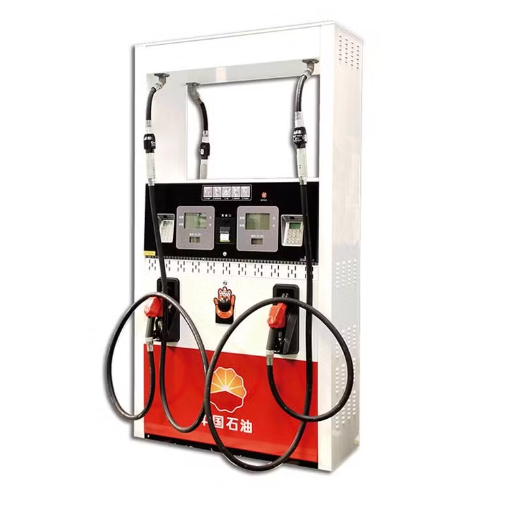
Due to their convenience and efficiency, automated fuel dispensers come in various arrangements. They are set up in fuel stations more favorably for self-service with attendant assistance, allowing them to operate 24 hours a day. These dispensers are also integrated into fleet management systems, which track fuel consumption and facilitate efficient fleet vehicle operations. Additionally, such dispensers are also used in the industrial and agricultural sectors, where bulk fuel is required, allowing for dispensing with minimal wastage. When such automated systems are installed, there will be enhancements in aspects of user experience, operation, and accountability related to the fuel.
Gas Stations and Fuel Stations
The role that gas stations and refueling stations fulfill is an essential one in providing a refueling point for vehicles, transportation, and livelihood. These stations typically fuel gasoline, diesel, and increasingly, some alternative fuels such as electric charging and hydrogen. In modern times, refueling stations are being developed with automated technology, such as card readers and mobile payments, that minimize queue time and maximize the station’s efficiency. Furthermore, most refueling stations offer convenience stores, air pumps, and car wash services, making them one-stop destinations for travelers and commuters.
Fuel stations with systems for monitoring and recording fuel consumption are heavily relied upon for fleet management, ensuring the accountability of operational activities and optimization effectiveness. Additionally, bulk fueling services at fuel stations provide machine and equipment refueling assistance in both agricultural and industrial domains. Concomitant with sustainability concepts comes innovation. The station has opted for renewable energy resources and advanced technology to curb environmental degradation and meet consumer expectations.
Portable Fuel Dispensers
Portable fuel dispensers provide a convenient and efficient refueling solution in remote locations or in sites where fixed infrastructure is lacking. As the name suggests, these dispensers are compact, sturdy, and portable enough for on-site refueling. They may be electric or manual and typically come in a variety of compatible models, suitable for several fuels such as gasoline, diesel, and kerosene. Modern portable fuel dispensers are often designed with the latest technology; among these features are digital meters for accurate fuel measurement, filtration systems to maintain fuel quality, and advanced locks to prevent contamination and theft. With their versatility and dependability, portable fuel dispensers have become a crucial fuel supply mechanism in industries such as construction, agriculture, and logistics, where continuous operation is essential.
Specialized Use Cases: Diesel vs Petrol
Diesel and petrol fuels serve different operating purposes owing to their nature and efficiency. Construction and logistics rely heavily on diesel-powered vehicles, which produce relatively high torque and are considered large machinery, such as trucks and equipment, that require substantial power. The diesel is highly energy-dense, and therefore it offers better fuel mileage over long-distance hauls and stresses.
On the other hand, petrol finds use in passenger cars and smaller machinery. With little engine noise and smooth acceleration, petrol-engine vehicles tend to be more suitable for urban commuting and personal transportation. Petrol also tends to burn cleaner when applications demand less engine load, thereby reducing emissions in such operations at the smaller scale.
The choice between diesel and petrol depends on the actual operation required by the type of machinery, load demands, its cost-effectiveness, and environmental impact.
Future Trends in Fuel Dispensation
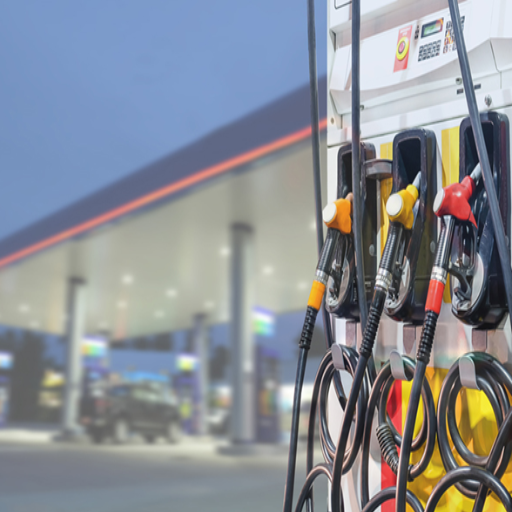
Fuel dispensing trends-the automated way. With new technological advancements, fuel stations are going under automation to provide faster service. Along with that, these are some renewable and alternative fuels being further incorporated into fueling infrastructure, including EV charging, hydrogen, and biofuels, to address greater environmental concerns. Hence, the period of reducing carbon emissions and promoting a cleaner energy approach worldwide began.
Innovations in Automatic Dispensing Technologies
Dispenser technology is considered a facilitator of excellence in terms of efficiency and customer experience in the fuel and retail sector. Contemporary systems utilize robotic fuel dispensers, enabling hands-free fueling through the use of sensors and AI to precisely position nozzles, making the process smooth for the user. Contactless payment technologies are also being developed to promote faster transactions using mobile apps and NFC technology. To supplement this, advanced inventory management functions not only rely on IoT but also implement real-time data analytics to determine fuel levels and operational status. Reduced waiting times, safer environments for workers, and environmentally conscious actions, which optimize resources and reduce energy waste, are the benefits of these systems.
Impact of Electric Vehicles on Fuel Dispensers
EVs, in their rise, have somewhat altered my thinking concerning the function of traditional fuel dispensers. With the mass adoption of electric vehicles, there seems to be a shift toward the need for charging stations rather than conventional fuel pumps. This idea has pressed me to look at hybrid solutions where we would mix fuel dispensers with EV charging setups. While the demand for fossil fuels will slowly diminish, I believe this presents an opportunity for innovation and adaptation to keep the infrastructure relevant while catering to the new needs of transportation.
Environmental Considerations in Fuel Dispensation
The environmental perspective regarding fuel dispensation primarily focuses on emission reduction, preventing fuel spills, and improving energy utilization. Modern-day stations install vapor recovery systems to prevent the release of harmful gases during refueling, thereby minimizing air pollution. Other means of reducing environmental impact include using biodegradable fuels and alternative energy sources, such as solar panels that supply power at station sites. Proper tank maintenance is essential for preventing spills and protecting groundwater from contamination risks. Together, they yield a more sustainable and environmentally friendly approach to fuel distribution, supporting the conversion to other energy solutions such as EV charging infrastructure.
Reference Sources
Frequently Asked Questions (FAQs)
What is an automated fuel dispensing system?
An automated fuel dispensing system is a technology used at gas stations and fuel stations to control the dispensing of fuel, such as petrol or diesel, without the need for manual intervention. It utilizes advanced software and hardware to manage transactions, monitor fuel flow, and ensure accurate billing and authorization.
How do automated fuel dispensers work?
Automated fuel dispensers work by integrating a pump, flow meter, and controller to dispense fuel into vehicles. When a customer activates the dispenser using a payment method, such as a debit card, the system verifies the authorization request, and the pump is engaged to transfer fuel into the customer’s fuel tank.
What types of fuel can be dispensed using automated fuel dispensers?
Automated fuel dispensers can handle a variety of fuels, including gasoline, diesel fuel, and alternative fuels. The fuel type is usually indicated on the nozzle, allowing customers to select the appropriate option based on their vehicle’s requirements.
What are the benefits of using automated fuel dispensing systems?
Using automated fuel dispensing systems offers several benefits, including increased efficiency, reduced waiting time, enhanced security against fraudulent activities, and improved billing accuracy. They also help in better management of fuel inventory and environmental safety through regular monitoring for leaks.
How can I troubleshoot technical issues with fuel dispensers?
If you encounter technical issues with automated fuel dispensers, start by checking the authorization terminal for any error messages. Ensure that the payment method is functioning correctly, and verify that the nozzle is properly inserted. For persistent problems, it may be necessary to contact a technician for assistance or to perform regular maintenance.
What measures are taken to ensure environmental safety with automated fuel dispensers?
Automated fuel dispensers are designed with environmental safety in mind. They are equipped with leak detection systems to prevent fuel spills, and they comply with local regulations regarding fuel transfer and storage. Regular maintenance is crucial to ensure that all components, including the submersible pump and flow meter, operate correctly and safely.
Can I get a refund or manage billing through automated fuel dispensers?
Yes, many automated fuel dispensers offer options for refunds or adjustments in billing. If a transaction is interrupted or an error occurs, customers can often request a refund through their original payment method. Additionally, the system securely stores billing information tied to the customer’s account for easy management of transactions.
What is the importance of regular maintenance for automated fuel dispensers?
Regular maintenance of automated fuel dispensers is essential to ensure they operate reliably and efficiently. This includes checking for leaks, calibrating flow meters, and ensuring that all components are lubricated and functioning correctly. Preventive maintenance helps to avoid costly repairs and downtime while ensuring compliance with safety regulations.

